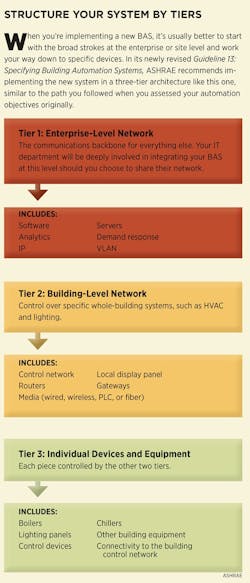Could You Save with Optimized Chiller Controls?
A new control technology for chiller plants relies on variable speed technology to deliver cooling more efficiently. Recent field tests noted savings of about 35% on energy consumption over the existing chiller plant’s baseline performance. Could the technology benefit your facility?
How It Works
Space cooling typically accounts for about 7.4% of a building’s energy consumption (or up to 9.6% for office buildings), but because space cooling is primarily driven by electricity, it may represent more than its share of the energy bill, GSA notes. The control technology is intended to minimize the total power requirements of centrifugal chiller plants by optimizing the pressure and temperature setpoints for chilled and condenser water while controlling pump and fan speeds for greater efficiency. The operating configuration is customized to each installation but generally uses the minimum number of chillers possible to satisfy mechanical cooling demand, with one serving as the primary chiller and the others put into service as needed. Chilled water and condenser water pumps start and stop along with the chillers.
The technology was tested at the Frank M. Johnson Jr. Federal Building and U.S. Courthouse in Montgomery, AL, from January to August 2013. The two five-story buildings are linked together and cover roughly 460,000 square feet. Space cooling is provided by a central chiller plant with three 400-ton centrifugal chillers, which were installed in 1998 and utilize constant-speed compressors and a primary-secondary chilled water distribution system.
Test Results
In operation, the control optimization system achieved an efficiency of 0.64 kW/ton and an expected average annual energy savings of 35%, according to the report. The findings were in line with the manufacturer’s claims of 0.65 kW/ton efficiency and 20-50% energy savings. Savings are greater in constant-speed chiller plants like the one in Montgomery, though variable-speed chiller plants will already have the required VFDs installed, which will reduce up-front costs. GSA recommends using this technology in buildings that:
- Pay more than 10 cents per kWh (placing them in the top 50% of GSA’s portfolio for electricity rates)
- Have a cooling season or process loads that require chillers to operate for at least 8 months of the year
- Have cooling loads greater than 500 ton-hours per day or 3 million ton-hours per year (4 million if the energy cost is below the national average of 11 cents per kWh)
- Use a BACnet-enabled BAS (though versions more than 5 years old will need additional programming)
- Already have at least three constant-speed centrifugal chiller flow systems (primary/secondary pumps, condenser pumps and cooling tower fans)
Due to limited baseline data, the agency has an 80% confidence level in the projected savings, meaning that the real savings could be as low as 24.2% or as high as 46.8% and the annual cost savings ranges from $28,962 to $56,009. The system achieved a payback within the 10-year life of the control technology at most cost saving levels, except those that resulted in savings of less than $31,000 per year.
Potential Pitfalls
Cost, familiarity, training and procurement can present issues with any new technology, but GSA identifies three other possible barriers that could present difficulty for would-be adopters of the control system.
1) The VFD requirement. Constant-speed chiller plants will need VFDs on all equipment, which could be costly. Older motors for pumps or tower fans may not be able to accept VFDs, and if it’s not possible to upgrade to a newer motor, the application of the optimization technology could be limited. However, the modular technology could still be installed on parts of the chiller plant, such as the condenser water distribution system.
2) Variable flow training. “Conventional constant-speed chiller plant operators are likely to be resistant to the variable flow operating approach associated with this new technology,” notes GSA. “Training will be crucial to the success of the technology’s adoption.” The report recommends making sure that operators understand how control optimization saves energy and why operating variable-speed pumps and fans at part load is more efficient than running at full load.
3) Procurement and specification. The optimization technology is currently offered by just one vendor. The manufacturer, which also offers its own BAS system, claims that the control product will interface with BAS products from other vendors, but GSA notes that an integration package may also be required to help the optimization technology communicate with other BAS brands.
